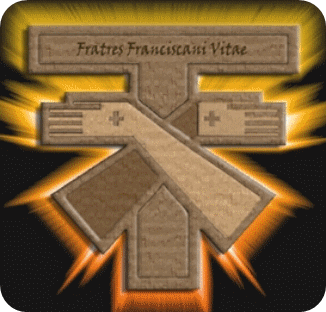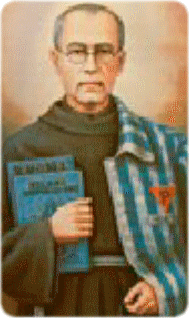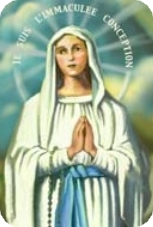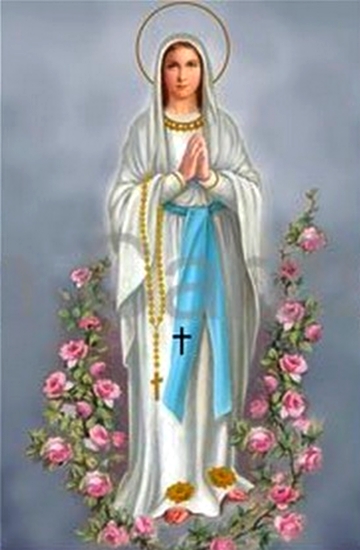|
St. John Paul II was born Karol Jozef Wojtyla the Polish town of Wadowice, the youngest of three. He lost his mother and his two siblings at an early age, and his father at age 20. An athletic young man, he enrolled at the Jagiellonian University studying topics as philology and languages, learning as many as 12 foreign languages. Obligated to participate in military training, he refused to bear arms.
When the Nazi forces occupied Poland in 1939 and closed the university, young Karol had to work in several positions including a restaurant, a limestone quarry, and a chemical factory. A year after his father's death, Karol - now aged 22 - obtained the bishop's blessing to enter the clandestine seminary. The young seminarian is credited with saving the life of a Jewish refugee girl who on the night that the Nazi fled the city ran away from a labor camp and collapsed on a railway platform. He has also been credited with helping find sanctuary for a Jewish child in order to prevent his deportation.
Ordained on All Saints' Day at age 26, Fr. Wojtila was sent to the Angelicum where he studied under Fr. Garrigou-Lagrange and obtained a Doctorate in Philosophy defending the thesis "The Doctrine of Faith in St. John of the Cross". Receiving his first pastoral assignment to the Polish village of Niegowic, he knelt and kissed the ground upon arrival - a gesture that he would repeat frequently through his papacy. After several assignments and teaching at several universities, he earned at 34 a Doctorate in Sacred Theology.
Appointed bishop in 1958 by Pope Pius XII, in 1962 he takes part in the Second Vatican Council, where he is credited with significant contributions to Dignitatis Humanae (on Religious Freedom) and Gaudium et Spes (on the Church in the Modern World). In 1967 Blessed Paul VI named him Cardinal. He was instrumental in the formulation of the encyclical Humanae Vitae condemning abortion and birth control.
After the death of John Paul I, he participated and was elected in the second conclave of 1978. He chose the name John Paul II in honor of his immediate predecessor. He made the first of many historical speeches at the balcony, reminding the crowd that the cardinals called for a new bishop of Rome "da una terra lontana"...a faraway land...and adding that he accepted "in a spirit of obedience to the Lord and total faithfulness to Mary, our most Holy Mother" (for whom he had a special devotion). Then he added the famous remark: "Non so se posso spiegarmi bene nella vostra... nella nostra lingua italiana...se mi sbaglio, voi mi corrigierete!" ("I don't know if I can explain myself well in your...in our Italian language...if I make a mistake, though, you will correct me!"). At age 58, he was the youngest pope since Pius IX in 1846.
During his pontificate, St. John Paul II visited 129 countries. In some occasions, he attracted some of the largest crowds ever assembled in human history. As part of his special emphasis on the universal call to holiness, he beatified 1,340 people and canonized 483 saints, more than his predecessors during the preceding five centuries. He dedicated the first major teaching of his pontificate to the Theology of the Body, in a series of 129 lectures given during his Wednesday audiences in St. Peter's Square and Paul VI Audience Hall. The complete addresses were later compiled and expanded, and would have a major impact in the world.
In 1995, on the Solemnity of the Annunciation, he issued his historical encyclical Evangelium Vitae ("The Gospel of Life"), expressing the position of the Church regarding the value and inviolability of human life. Written after years of consultations with the world's bishops, the encyclical presents an overview of threats to human life both past and present, addressing actions including murder, abortion, euthanasia, and death penalty. The encyclical also addresses social and ecological factors, stressing the importance of a society which is built around the family rather than a wish to improve efficiency, and emphasizing the duty to care for the poor and the sick.
On 3 May 1981, an attempt was made on his life in Saint Peter's Square. Saved by the maternal hand of the Immaculate, following a lengthy stay in the hospital, he visited and forgave the attempted assassin and, aware of having received a great gift, intensified his pastoral commitments with heroic generosity.
Pope John Paul II also demonstrated his pastoral concern by erecting numerous dioceses and ecclesiastical circumscriptions, and by promulgating Codes of Canon Law for the Latin and the Oriental Churches, as well as the Catechism of the Catholic Church. He proclaimed the Year of Redemption, the Marian Year and the Year of the Eucharist as well as the Great Jubilee Year of 2000, in order to provide the People of God with particularly intense spiritual experiences. He also attracted young people by beginning the celebration of World Youth Day.
Pope John Paul II died in the Apostolic Palace on Saturday, 2 April 2005, the vigil of Divine Mercy Sunday, which he had instituted. On 8 April, his solemn funeral was celebrated in Saint Peter's Square and he was buried in the crypt of Saint Peter's Basilica. He was beatified in Saint Peter's Square on 1 May 2011 by Pope Benedict XVI and canonized on 27 April 2014 (Divine Mercy Sunday) by Pope Francis. His memorial was established on October 22, anniversary of his papal inauguration, the day in which he spoke words that would remain unforgettable: "Non abbiate paura! Aprite, anzi, spalancate le porte a Cristo! Cristo sa 'cosa è dentro l’uomo'. Solo lui lo sa!" (Do not be afraid! Open, open wide the doors for Christ! Christ knows 'what is in man'. He alone knows it!)
|






